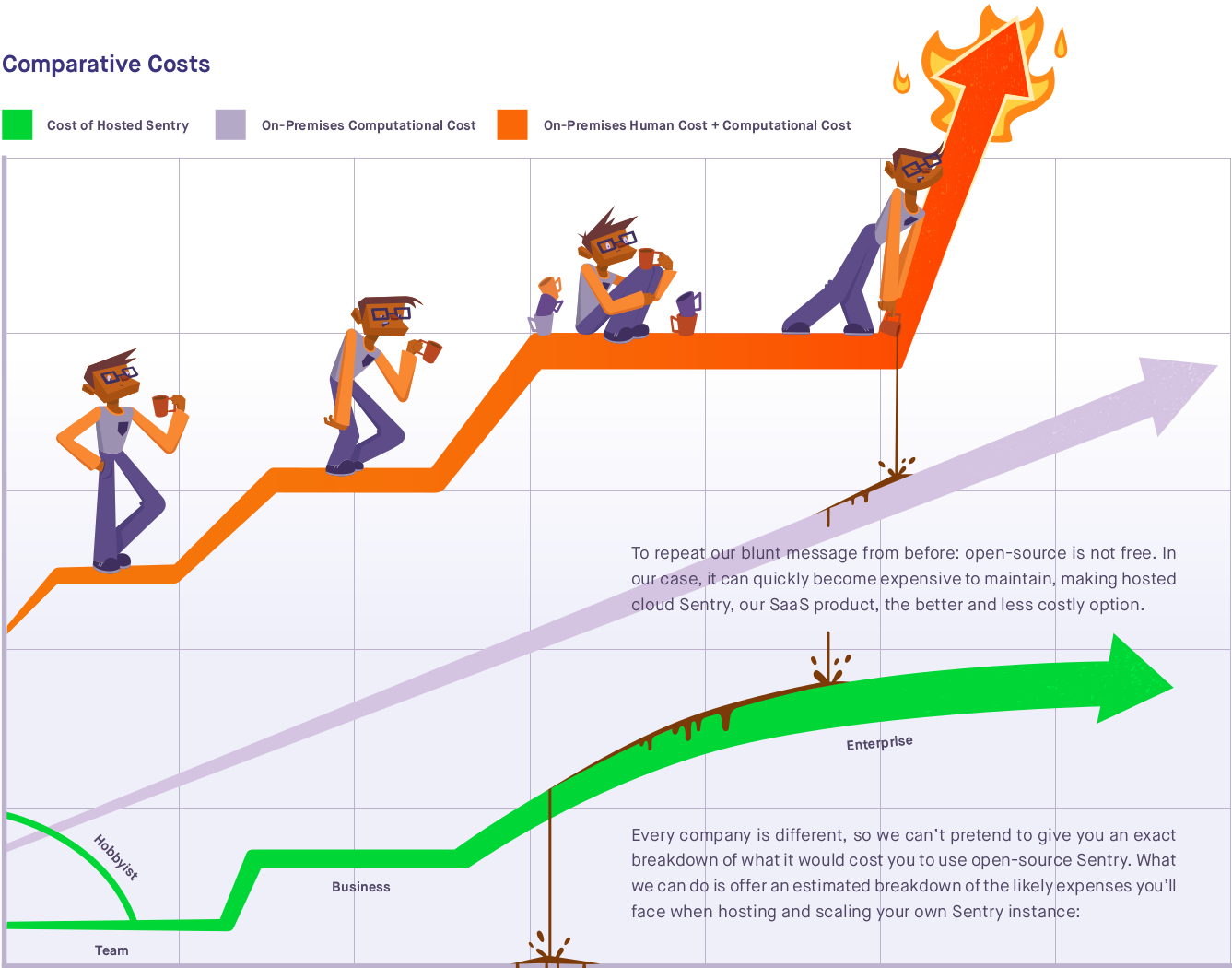Self-Hosted Sentry Support
If you’re running Sentry on your own infrastructure and looking for official support, you’re going to run into a wall. Sentry makes the source available, but does not support self-hosted installations. That’s not speculation, it’s their stated policy:
We DO NOT provide dedicated support for self-hosted.
and
we’re only able to provide support for users on our hosted SaaS platform.
Self-hosting is advised against
Sentry does maintain a Docker-based on-premises install. But it comes with caveats:
- No official support
- Future-breaking changes are not announced in advance
- Increasing infrastructure complexity with each release
- Expect to manage upgrades and breakage yourself
Here’s how they visualize the difference between self-hosted and their cloud offering:

Sentry’s own documentation warns that “our self-hosted version will become more complex, demanding additional types of infrastructure” They even note they “don’t necessarily recommend self-hosting to everyone.” See their own marketing material for the full disclaimers.
For more background, read Why I Gave Up on Self-Hosted Sentry.
Not Just Policy – A Philosophy
Sentry’s stance is deliberate. They don’t see on-premise operation as something most developers should be doing. In a public discussion, Sentry’s CEO put it plainly:
We enable self-hosting because not everyone can use a cloud service (e.g. government regulation), otherwise we probably wouldn’t even spend energy on it. We dont commercialize it at all, and likely never will. I strongly believe people should not run many systems themselves, and something that monitors your reliability is one such system. — David Cramer (zeeg), Hacker News
In other words, their position is not just about resource allocation—it’s a belief that developers shouldn’t self-host at all, even if they want to.
I disagree.
At Bugsink, I believe running your own tools is part of being a software developer. You should be able to run critical infrastructure – if the software isn’t a nightmare. That’s not idealism, it’s practical. It’s a mindset: developers should have agency over their tools, and be supported when they exercise it.
So Why Does This Page Exist?
If you’ve been piecing together answers from GitHub issues, Discord, and docs, this page brings it all together.
Because people keep searching for self-hosted Sentry support, and finding GitHub threads from 2021. This page is here to save you time. Yes, you’re currently on the website of a competitor. No, we’re not pretending otherwise.
Bugsink Exists
I built Bugsink because I think you should be able to self-host without giving up support.
- Actually supported – We respond. Bugsink is self-hosted, and we back it.
- Minimal system requirements – 2GB rather than 16GB RAM requirement. Single-container rather than dozens.
- Compatible with Sentry SDKs – Swap the DSN and go.
If you’re tired of duct-taping your monitoring system together without help, Bugsink is for you. We want to make running your own software boring again—in the best way.
Need help? You’ll get it. Self-hosting shouldn’t mean solo troubleshooting.
Read more: Why I Gave Up on Self-Hosted Sentry Real-world pain: “I almost died for a full Sentry database”
